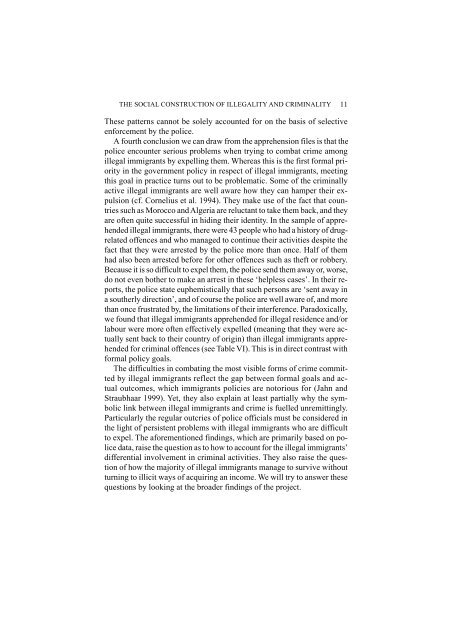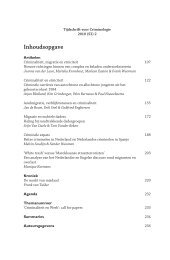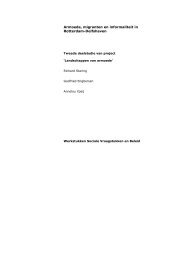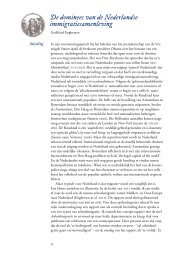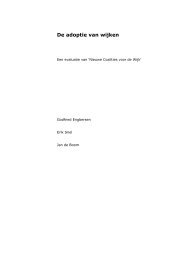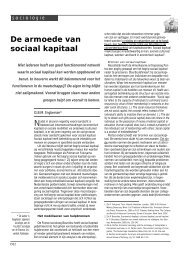THE SOCIAL CONSTRUCTION OF ILLEGALITY AND CRIMINALITY ...
THE SOCIAL CONSTRUCTION OF ILLEGALITY AND CRIMINALITY ...
THE SOCIAL CONSTRUCTION OF ILLEGALITY AND CRIMINALITY ...
You also want an ePaper? Increase the reach of your titles
YUMPU automatically turns print PDFs into web optimized ePapers that Google loves.
<strong>THE</strong> <strong>SOCIAL</strong> <strong>CONSTRUCTION</strong> <strong>OF</strong> <strong>ILLEGALITY</strong> <strong>AND</strong> <strong>CRIMINALITY</strong> 11<br />
These patterns cannot be solely accounted for on the basis of selective<br />
enforcement by the police.<br />
A fourth conclusion we can draw from the apprehension files is that the<br />
police encounter serious problems when trying to combat crime among<br />
illegal immigrants by expelling them. Whereas this is the first formal priority<br />
in the government policy in respect of illegal immigrants, meeting<br />
this goal in practice turns out to be problematic. Some of the criminally<br />
active illegal immigrants are well aware how they can hamper their expulsion<br />
(cf. Cornelius et al. 1994). They make use of the fact that countries<br />
such as Morocco and Algeria are reluctant to take them back, and they<br />
are often quite successful in hiding their identity. In the sample of apprehended<br />
illegal immigrants, there were 43 people who had a history of drugrelated<br />
offences and who managed to continue their activities despite the<br />
fact that they were arrested by the police more than once. Half of them<br />
had also been arrested before for other offences such as theft or robbery.<br />
Because it is so difficult to expel them, the police send them away or, worse,<br />
do not even bother to make an arrest in these ‘helpless cases’. In their reports,<br />
the police state euphemistically that such persons are ‘sent away in<br />
a southerly direction’, and of course the police are well aware of, and more<br />
than once frustrated by, the limitations of their interference. Paradoxically,<br />
we found that illegal immigrants apprehended for illegal residence and/or<br />
labour were more often effectively expelled (meaning that they were actually<br />
sent back to their country of origin) than illegal immigrants apprehended<br />
for criminal offences (see Table VI). This is in direct contrast with<br />
formal policy goals.<br />
The difficulties in combating the most visible forms of crime committed<br />
by illegal immigrants reflect the gap between formal goals and actual<br />
outcomes, which immigrants policies are notorious for (Jahn and<br />
Straubhaar 1999). Yet, they also explain at least partially why the symbolic<br />
link between illegal immigrants and crime is fuelled unremittingly.<br />
Particularly the regular outcries of police officials must be considered in<br />
the light of persistent problems with illegal immigrants who are difficult<br />
to expel. The aforementioned findings, which are primarily based on police<br />
data, raise the question as to how to account for the illegal immigrants’<br />
differential involvement in criminal activities. They also raise the question<br />
of how the majority of illegal immigrants manage to survive without<br />
turning to illicit ways of acquiring an income. We will try to answer these<br />
questions by looking at the broader findings of the project.


